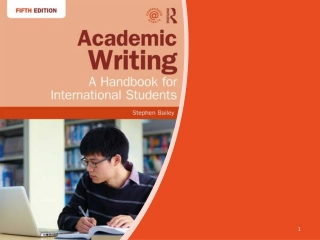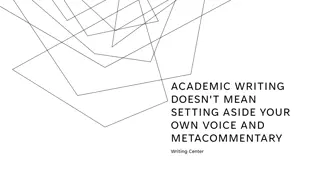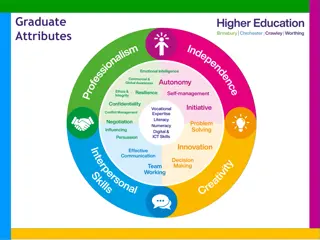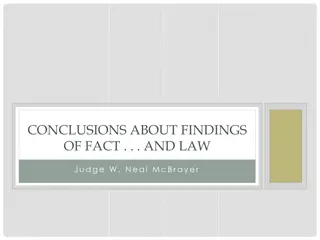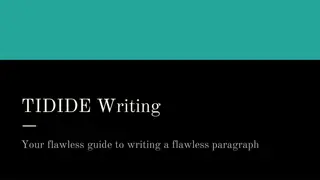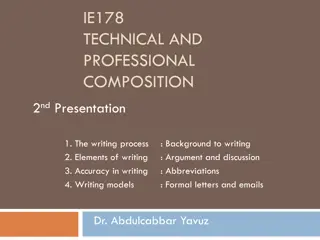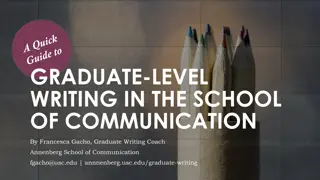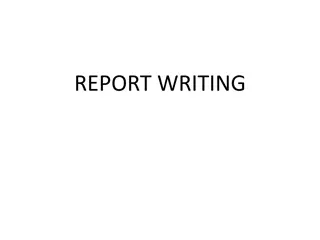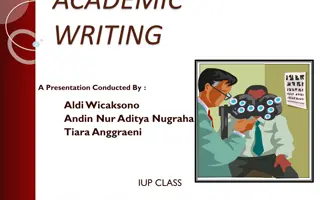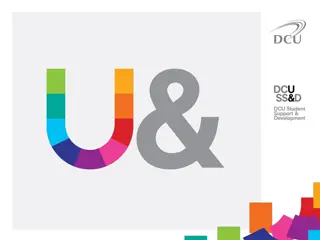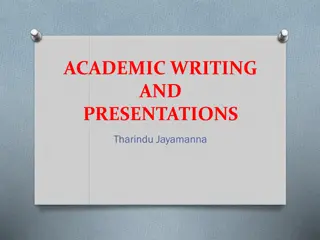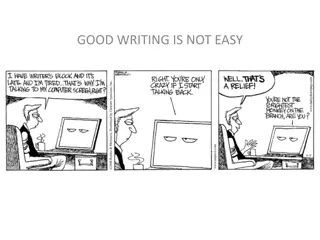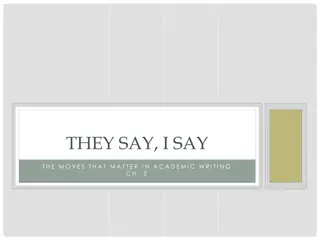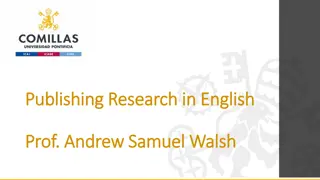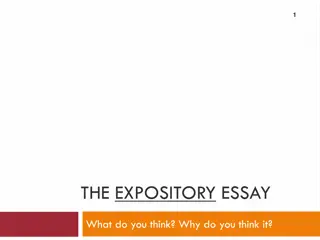Mastering Academic Writing Conclusions
Learn the essential steps to craft a compelling conclusion in academic writing, including restating the topic, summarizing results, addressing opposing views, stating significance, and offering recommendations. Understand the dos and don'ts to create a strong conclusion that leaves a lasting impression on your readers.
Download Presentation

Please find below an Image/Link to download the presentation.
The content on the website is provided AS IS for your information and personal use only. It may not be sold, licensed, or shared on other websites without obtaining consent from the author. Download presentation by click this link. If you encounter any issues during the download, it is possible that the publisher has removed the file from their server.
E N D
Presentation Transcript
ANRCB Training Module 9 Academic Writing Session 8: Writing the Conclusions Carmen D. Tekwe, PhD Department of Epidemiology and Biostatistics, School of Public Health, Indiana University Bloomington November 7, 2023 Applied Nutrition Research Capacity Building (ANRCB) project of the Lao American Nutrition Initiative (LANI) This work is made possible through support from USAID as a supplement to a USAID Cooperative Agreement #7200AA18CA00009 (LASER-PULSE) to Purdue University. Contents reflect the views of the author and do not necessarily reflect those of USAID.
Conclusion How do we define the word conclusion ? The end or finish point of an event ~ dictionary.com The last part of something ~ Merriam-Webster What does the word conclusion mean to you? ANRCB | 2
Outline of a research paper Part 1 State the general topic and hypothesis (Introduction) Part 2 Provide specific details to support your topic (Body) Part 3 Finalize and briefly summarize your findings (Conclusion) ANRCB | 3
Steps to writing the Conclusion section Step 1 Restate the general topic and emphasize its importance. (So What???) Step 2 Briefly summarize the results. Step 3 State and address other potential views. Step 4 State the significance of your findings and how they relate to opposing views. (So What???) Step 5 State the take home message. Step 6 State some recommendations or future directions. ANRCB | 4
Dos of the Conclusion section Keep your sentences straightforward and simple. State your last word on the topic. Summarize your results and how they relate to the bigger picture or opposing views in the field. State the importance of your findings and results. ANRCB | 5
Donts of the Conclusion section Don t restate the details of the results. Don t use complex words or jargons. Don t restate the details written in your Discussion section. Don t introduce new ideas or new thoughts. ANRCB | 6
Example of a Conclusion Section Based on the available evidence, omega-3 supplementation may have favorable hypolipidemic effects through reduction of TG levels. Since these improvements were observed in younger children and those with hypertriglyceridemia, clinicians should be aware these beneficial effects. Also, based on HDL-related results, clinical trials with longer duration of intervention and appropriate designs are recommended in this population. Khorshidi et al. Nutrition Journal 2023 ANRCB | 7
Group exercise 1 (5 minutes) Write the first sentence of the Conclusion section for your project. ANRCB | 8
Group exercise 2 (3-5 minutes) Write the so what of the findings from your project. ANRCB | 9
Group exercise 3 (3-5 minutes) Write the recommendations/future directions for your project. ANRCB | 10
Takeaway messages 1. State the conclusions in concise and simple sentences. 2. Don t introduce new ideas or topics in the conclusions. 3. Discuss opportunities for future directions and research. ANRCB | 11


